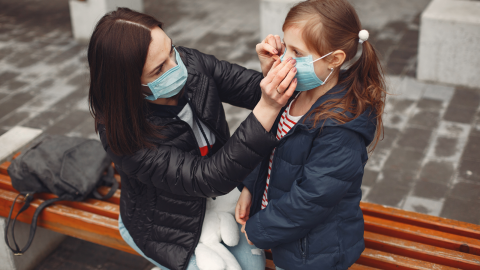 Auto Claims Trends: Frequency, Severity, Repair Costs, and Turnaround Times
Auto Claims Trends: Frequency, Severity, Repair Costs, and Turnaround TimesCalifornia has reopened – but the pandemic isn’t exactly over. Cal/OSHA has issued updated and revised Emergency Temporary Standards to help businesses keep up with the latest health and safety guidance as they begin the return to normal.
California Is Open for Business
California has fully reopened its economy. There are no more physical distancing requirements or capacity limits, and the county risk-level tiers have been retired.
However, some safety guidelines remain in place. People who have not been vaccinated are expected to continue to wear masks in indoor public settings. Additionally, even people who have been vaccinated are supposed to wear masks in certain situations, such as when using public transportation or when going to hospitals, long-term care facilities, homeless shelters, and schools.
Even though there are no longer any physical distancing or capacity limits for businesses, most businesses need to comply with the COVID-19 Prevention Emergency Temporary Standard. This standard has recently been revised.
The Revised Cal/OSHA Standards
On June 17, 2021, the Occupational Safety and Health Standards board voted to update the Cal/SOSHA COVID-19 Emergency Temporary Standards. These revisions went into effect immediately.
The new standards revised the standards that have been in effect since November 30, 2020. Many requirements from the earlier standard remain active, including the requirement for a written COVID-19 Prevention Program and various requirements for training, testing, notification, and outbreak response.
In addition to these requirements, there are several key changes that reflect the latest safety and health guidance and the fact that many workers are now fully vaccinated.
These changes include the following:
- Fully vaccinated employees don’t have to be quarantined or tested after exposure to COVID-19 as long as they don’t have symptoms, and employers don’t have to require them to wear face coverings, but the employer must document the vaccine status.
- Employees do not typically have to wear masks outdoors, and no physical distancing or barriers are required in most cases, regardless of vaccine status. Masks, barriers, and physical distancing may be required during an outbreak.
- Employers must train workers on CDPH recommendations for outdoor mask use.
- Employers cannot retaliate against employees who chose to wear face coverings.
For more information on the changes, see the California Department of Industrial Relations FAQ. For more information on California’s reopening, see COVID19.CA.gov.
Continued Caution Is Needed
Business owners are understandably eager to get back to normal, and California’s reopening is welcome news. However, caution is still needed. With new strains like the Delta variant in circulation, there may still be risk of an outbreak. Strong safety measures are needed to keep workers and customers safe and to reduce liability.
For questions regarding the revised Emergency Temporary Standards, contact Heffernan’s Consulting Division.



